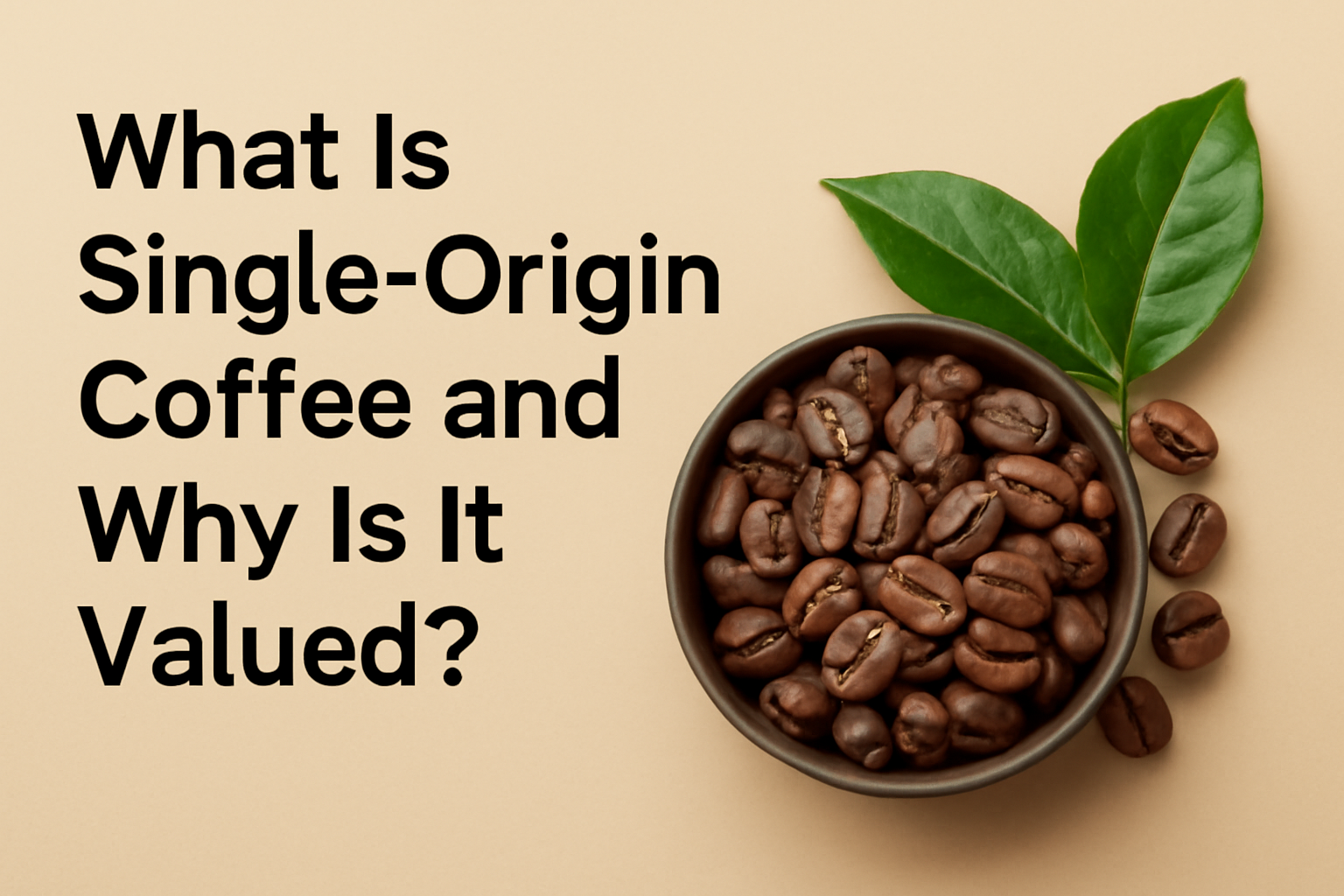Single-origin coffee has become a buzzword in the specialty coffee industry, captivating consumers and connoisseurs alike. But what exactly does single-origin mean, and why is it so highly valued? This article explores the concept of single-origin coffee, its unique characteristics, and the reasons behind its rising popularity among coffee enthusiasts and professionals worldwide.
Defining Single-Origin Coffee
Single-origin coffee refers to coffee beans sourced from a specific geographical location, such as a particular country, region, farm, or even a single lot within a farm. Unlike blends, which combine beans from various origins, single-origin coffee highlights the unique flavors and qualities imparted by its place of origin.
The term can apply at different levels of specificity:
- Country Origin: Coffee from one country, like Ethiopia or Colombia.
- Regional Origin: Beans from a specific region within a country, such as Yirgacheffe in Ethiopia or Huila in Colombia.
- Farm or Estate: Coffee sourced from a single farm or estate, emphasizing unique microclimates and farming practices.
- Lot or Micro-lot: Highly specific batches selected for exceptional quality.
Single-origin coffee emphasizes traceability, transparency, and a connection to the terroir—the environmental factors influencing flavor.
The Concept of Terroir in Coffee
Terroir is a term borrowed from wine culture that refers to the environmental conditions—soil, altitude, climate, and farming practices—that shape a crop’s characteristics. In coffee, terroir profoundly impacts bean flavor, acidity, body, and aroma.
Single-origin coffees showcase the distinctive terroir of their origin, offering consumers an authentic sensory experience. For example:
- Ethiopian coffees often have floral and citrus notes due to high-altitude growing conditions.
- Colombian coffees are known for their balanced acidity and caramel sweetness.
- Kenyan coffees feature bright acidity and berry-like flavors.
Understanding terroir allows roasters and consumers to appreciate the complexity and diversity within coffee.
Why Single-Origin Coffee Is Valued
1. Unique Flavor Profiles
Single-origin coffees provide a diverse range of flavors that reflect their origin’s terroir. Unlike blends designed to create a uniform taste, single-origin beans offer distinctive sensory experiences that can be fruity, floral, earthy, chocolatey, or spicy.
This uniqueness appeals to specialty coffee drinkers seeking exploration and variety, turning coffee tasting into a journey around the world through flavors.
2. Transparency and Traceability
Consumers today demand transparency about the products they consume. Single-origin coffee meets this need by providing detailed information about the farm, region, and cultivation methods.
Traceability supports ethical sourcing and fair trade practices, ensuring farmers receive fair compensation. It builds trust between producers, roasters, and consumers, fostering a more sustainable coffee industry.
3. Quality and Specialty Status
Single-origin coffees are often associated with higher quality. Many specialty coffee roasters select single-origin beans from farms or micro-lots with exceptional growing conditions and rigorous quality control.
This focus on quality is reflected in the meticulous processing methods—washed, natural, honey—that further influence flavor. Single-origin coffee is frequently featured in coffee competitions and awards, enhancing its prestige.
4. Support for Small-Scale Farmers
Buying single-origin coffee can directly support small-scale farmers and cooperatives. Roasters who source single-origin beans often build relationships with growers, investing in community development and sustainable farming.
This ethical connection empowers producers, improves livelihoods, and promotes environmentally friendly practices, aligning with consumers’ social responsibility values.
5. Educational and Experiential Value
Single-origin coffee educates consumers about coffee diversity and cultivation. It invites exploration of how factors like altitude, soil, and processing affect taste.
Coffee shops offering single-origin options often provide tasting notes, brewing recommendations, and origin stories, enhancing the overall coffee experience and appreciation.
Challenges and Considerations with Single-Origin Coffee
While single-origin coffee offers many benefits, it also presents challenges:
- Flavor Variability: Unlike blends, single-origin coffees can vary from season to season due to climate and agricultural factors, requiring consumers to adapt expectations.
- Price: Single-origin coffees often command higher prices due to limited supply, quality focus, and traceability efforts.
- Availability: Some single-origin coffees are seasonal or limited in quantity, making them harder to source consistently.
Roasters and consumers need to balance these factors when choosing single-origin coffee.
How to Enjoy Single-Origin Coffee
To fully appreciate single-origin coffee, consider the following tips:
- Use Fresh Beans: Freshness preserves delicate flavors. Buy whole beans and grind just before brewing.
- Choose the Right Brewing Method: Different origins and roast levels shine with specific brewing methods—pour-over for light roasts, espresso for medium roasts, French press for full-bodied coffees.
- Experiment with Ratios and Temperatures: Adjust coffee-to-water ratios and water temperatures to highlight desired flavor notes.
- Taste Mindfully: Note aroma, acidity, sweetness, body, and finish to understand the coffee’s profile.
Conclusion: The Value of Single-Origin Coffee
Single-origin coffee celebrates the diversity, complexity, and cultural richness of coffee production worldwide. Its focus on terroir, transparency, and quality elevates coffee from a commodity to an artisanal product.
For coffee lovers, single-origin coffee offers an opportunity to explore unique flavors and support sustainable, ethical practices. For producers and roasters, it fosters innovation and quality improvement.
Embracing single-origin coffee enriches the entire coffee experience, connecting people through the stories and flavors of coffee’s origin.
Explore single-origin options today and discover the remarkable world of coffee like never before.

